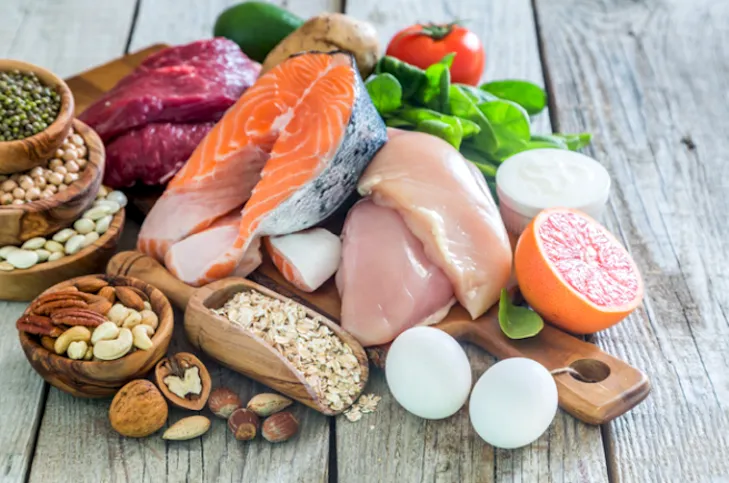Transitioning your beloved canine companion to a homemade diet can be a rewarding way to ensure they receive fresh, wholesome nutrition tailored to their specific needs. However, the journey to finding the Best Dog Food Recipes Recommended By Vets requires careful consideration and, most importantly, professional guidance. While the internet abounds with countless recipes for homecooked dog meals, experts, including the American College of Veterinary Nutrition (ACVN), caution that many of these lack proper veterinary nutritional review, potentially leading to unbalanced diets. This underscores the critical need to consult with your veterinarian or a board-certified veterinary nutritionist before making any significant dietary changes. A veterinarian can assess your dog’s age, size, health status, and breed-specific requirements, helping you navigate the complexities of canine nutrition to avoid potential deficiencies or excesses that could be detrimental to their health, especially for young, pregnant, or lactating dogs who have highly unique dietary demands.
Why Vet Consultation is Crucial for Homemade Dog Food
Many dog owners assume that any home-cooked meal will be healthier, but without a veterinarian’s input, even the most well-intentioned efforts can fall short. The nutritional needs of dogs are complex, requiring a precise balance of macro and micronutrients. For instance, growing puppies need appropriate amounts of calcium and phosphorus to prevent significant bone abnormalities, as highlighted by Dr. Jerry Klein, AKC chief veterinarian. Without expert guidance, achieving this delicate balance in homemade recipes is challenging. Therefore, when seeking the best dog food recipes recommended by vets, the first step is always a professional consultation. This initial discussion ensures that any homemade diet you consider will genuinely support your dog’s well-being and longevity, rather than inadvertently causing health issues that might require a visit to an urgent care animal hospital.
The Essential Building Blocks of a Balanced Canine Diet
Understanding the core components of a healthy dog diet is fundamental, especially when discussing homemade options with a veterinary expert. A balanced homemade dog food recipe must include a precise mix of proteins, fats, carbohydrates, fiber, vitamins, and minerals.
Protein: The Foundation for Growth and Energy
Proteins are vital for dogs, providing essential amino acids their bodies cannot produce on their own. These amino acids are crucial for glucose creation, which converts into energy. High-quality protein sources suitable for dogs include lean chicken and turkey (bones, fat, and skin removed), beef, lamb, limited amounts of pork, and certain fish like salmon, whitefish, herring, walleye, flounder, and Arctic char. Always ensure these proteins are thoroughly cooked and prepared safely for canine consumption.
Fats and Fatty Acids: Fueling Cells and Healthy Coats
Fats are concentrated energy sources and deliver essential fatty acids that dogs’ bodies cannot manufacture. These fatty acids are indispensable for cellular function and structure, maintaining a healthy skin and coat, and even enhancing food palatability. Excellent sources include animal fats and plant-based oils such as corn, soybean, canola, flaxseed, and fish oil. Incorporating the right fats is key to crafting the best dog food recipes recommended by vets.
Carbohydrates: Sustained Energy and Digestion
Carbohydrates provide dogs with another source of energy, encompassing sugars, starches, and dietary fibers. Common and beneficial carbohydrate sources for homemade dog food include rice, pasta, oatmeal, and quinoa. These ingredients offer sustained energy and contribute to overall digestive health.
Fiber: Maintaining a Healthy Gut
Dietary fiber is critical for a dog’s gastrointestinal (GI) system to function optimally and helps in weight management. Good fiber sources include carrots, pumpkin, apples, dark leafy greens, brown rice, and flaxseed. Fiber aids in proper digestion and can help prevent issues like constipation or diarrhea.
Vitamins: Essential for Growth and Maintenance
Vitamins are indispensable for a dog’s growth and maintenance, with deficiencies or excesses potentially leading to various health problems. A balanced homemade diet must include a range of vitamins such as:
- Vitamin A: Found in carrots and pumpkin.
- B Vitamins: Abundant in liver, green vegetables, and whole grains.
- Vitamin C: Present in fruits, vegetables, and organ meats.
- Vitamin D: Sourced from liver, fish, and beef.
- Vitamin E: Rich in leafy green vegetables, liver, bran, and plant oils.
- Vitamin K: Found in fish and leafy green vegetables.
- Choline: Available in liver, fish, meats, and egg yolks.
 A dog happily eating from a food bowl indoors, demonstrating healthy eating habits.
A dog happily eating from a food bowl indoors, demonstrating healthy eating habits.
Minerals: The Backbone of Bodily Functions
Twelve essential minerals play crucial roles in a dog’s health:
- Calcium and Phosphorus: For strong bones and teeth, found in tofu, green beans, broccoli, cauliflower (calcium), meat, and eggs (phosphorus).
- Magnesium, Potassium, Sodium, and Chloride: Important for nerve impulse transmission, muscle contraction, and cell signaling, present in fruits, vegetables, and whole grains.
- Sulfur: For healthy skin, coat, and nails, found in meat, fish, and molasses.
- Iron: Supports red blood cells and the immune system, primarily found in red meats and poultry.
- Iodine: Essential for a healthy thyroid, available in dairy, kelp, and seafood.
- Zinc: Boosts the immune system and maintains healthy skin and coat, found in eggs, lamb, liver, and brewer’s yeast.
- Selenium: Enhances the immune system, present in meat, vegetables, seafood, and brown rice.
- Copper: Crucial for healthy bone growth, found in whole grains, seeds, and seafood.
Water: The Overlooked Essential
Often underestimated, water is perhaps the most critical ingredient in a healthy dog’s diet. No food, homemade or commercial, provides enough water for your dog. Always ensure your dog has access to clean, fresh water to stay properly hydrated. If you notice your dog drinking excessively or exhibiting unusual thirst, it might be worth contacting a 24hr animal hospital near me to rule out any underlying health issues.
Making the Seamless Transition to Homemade Dog Food
Once you’ve decided on a homemade diet with veterinary approval, implementing the change correctly is vital for your dog’s health and comfort.
Consult a Veterinarian or Veterinary Nutritionist
As emphasized, your first and most critical step is to consult a veterinarian or board-certified veterinary nutritionist. These experts can help you identify high-quality, vet-approved dog food recipes tailored to your dog’s unique nutritional needs based on their age, size, and health history. They are your best resource for reliable information, preventing the pitfalls of generic online recipes. In case of an emergency or urgent questions, knowing where your nearest pet er near me is located can provide peace of mind.
Sourcing Quality Ingredients
Just as you would for your own meals, pay close attention to the source, expiration dates, and labels of ingredients for your dog’s homemade food. Opt for fresh, high-quality ingredients to ensure maximum nutritional value and safety. This attention to detail is part of creating the best dog food recipes recommended by vets.
Gradually Switching Dog Food
A gradual transition is key when changing your dog’s diet, whether to a homemade regimen or a new commercial food. This minimizes the risk of upsetting your dog’s sensitive GI system. Over five to seven days, slowly mix increasing amounts of the new homemade food with the old food, allowing your dog ample time to adjust. A sudden change can lead to digestive upset, potentially requiring a visit to a hospital animal near me.
Adhering Strictly to the Recipe
Once you have a vet-approved recipe, it’s crucial to follow it precisely. Studies, like one published by Tufts Cummings Veterinary Medical Center Clinical Nutrition Service, have shown that many owners deviate from original recipes over time, compromising the nutritional balance. The method of cooking (steaming, roasting, boiling) also impacts nutrient content. Substituting or adding ingredients without expert guidance can lead to nutritional deficiencies, as highlighted in the Journal of the American Veterinary Medical Association, where a lack of clear instructions often leads to inadequate or harmful diets.
Post-Transition Monitoring and Follow-Up
After the transition, closely monitor your dog for any digestive changes, such as softened stool, vomiting, or diarrhea, and consult your veterinarian if these occur. Regularly monitor their weight, as it may take time to determine the correct portion sizes for their specific age, size, and energy level. This ongoing observation ensures your dog thrives on their new diet. If any concerning symptoms arise suddenly, seeking advice from urgent vets for pets is advisable.
 A delicious looking homemade dog food meal with meat, carrots, and peas in a bowl.
A delicious looking homemade dog food meal with meat, carrots, and peas in a bowl.
Resources for Home Dog Food Enthusiasts
For those dedicated to preparing the best dog food recipes recommended by vets, several resources can provide invaluable assistance:
- Your Dog’s Veterinarian: Always your primary resource, your vet understands your dog’s health history and current condition best.
- Veterinary Nutritionist Directory: The Diplomate directory at www.acvn.org helps you find a board-certified veterinary nutritionist for personalized homemade diet consultations, even remotely.
- BalanceIT: Operated by a veterinary nutritionist, BalanceIT (secure.balanceit.com/recipegenerator_ver4/index.php?rotator=EZ) offers an online consulting service to formulate basic, nutritionally balanced recipes.
- Ask the Nutritionist: PetDiets.com’s “Ask the Nutritionist” section can provide answers to common questions.
- ChefPaw: For an efficient way to prepare homemade dog food, ChefPaw.com offers a countertop dog food maker that can prepare fresh meals in 40 minutes, focusing on maximizing your dog’s nutrition while saving time and money.
By diligently following these guidelines and leveraging expert resources, you can confidently prepare the best dog food recipes recommended by vets, ensuring your furry friend enjoys a diet that is both delicious and nutritionally complete.
References
- American College of Veterinary Nutrition (ACVN). “Understanding Homemade Diets.” ACVN.org.
- Klein, Jerry, DVM. AKC Chief Veterinarian. Personal communication regarding canine nutrition.
- Tufts Cummings Veterinary Medical Center Clinical Nutrition Service. “Owner Adherence to Home-Cooked Dog Food Recipes.” Wiley Online Library.
- Journal of the American Veterinary Medical Association. “Assessment of Commercial and Home-Prepared Dog Diets.” AVMAjournals.avma.org.
- AKC. “Cooking for Your Dog: Do’s and Don’ts.” AKC.org.
- AKC. “Can Dogs Eat Chicken/Turkey/Pork/Salmon/Fish/Rice/Wheat/Apples/Carrots/Pumpkin/Green Beans/Eggs?” AKC.org.
- Today’s Veterinary Practice. “Role of Dietary Fatty Acids in Dogs & Cats.” Todaysveterinarypractice.com.
- AKC. “Benefits of High Fiber Dog Foods.” AKC.org.
- AKC. “Vitamins Dogs Need for a Healthy Lifestyle.” AKC.org.
- AKC. “Is Your Puppy Drinking Enough Water?” AKC.org.
- AKC. “The Right Way to Switch Dog Foods.” AKC.org.
